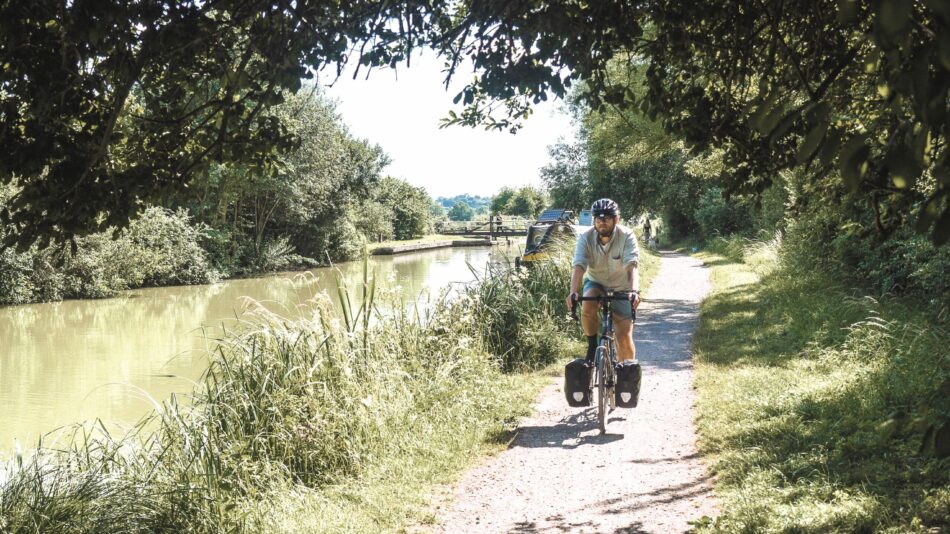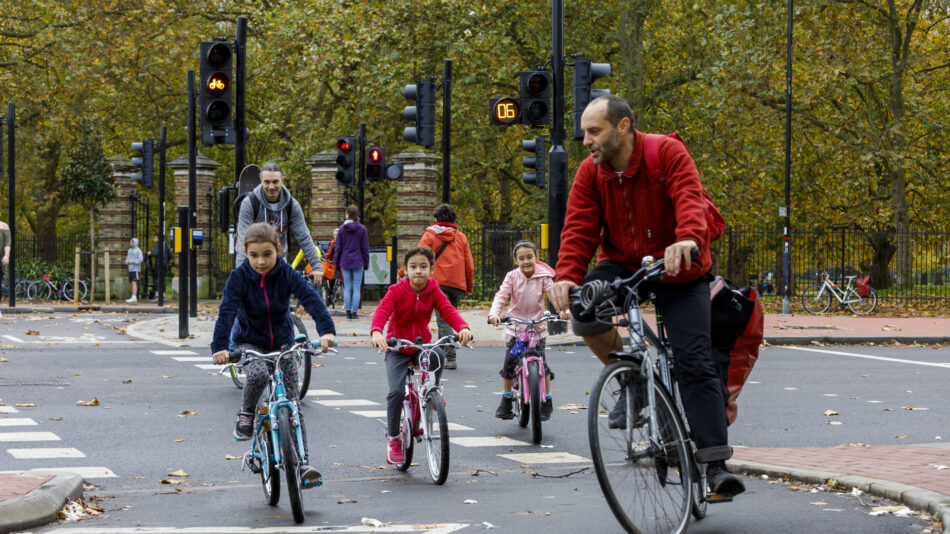

Bath owes its status as a UNESCO World Heritage Site to its beautifully-preserved Roman baths and grand Palladian terraces. These are fine buildings by themselves, but what makes them sing is their setting in the steep-sided Avon valley. The tricky topography made big demands on engineers, especially those who built the canals and railways that drove the city’s industrial growth in the 18th and 19th centuries.
Bath is a perfect destination for a weekend mini-break and this day ride takes in a wealth of sights, including Georgian canals bridges, aqueducts, honey-stoned Cotswold villages, a Roman road, Britain’s longest cycleable railway tunnel, lots of quiet country lanes and multiple pub options.
The ride is taken from Lost Lanes West, the third and latest in Jack Thurston’s best-selling series of cycling guidebooks which covers the counties of Wiltshire, Dorset, Somerset, Devon and Cornwall.
START & FINISH: Bath railway station.
DISTANCE: 72km (45 miles)
TOTAL ASCENT: 747m (2,450ft)
TERRAIN: Mostly lanes, tarmac cycle paths and well-surfaced canal towpath.
SUITABLE FOR: Gravel/cyclocross, light hybrid, touring and road bikes (with a decent spread of low gears).
BIKE HIRE: Green Park Bike Station in Bath offers hybrids or e-bikes for hire. Also available from Towpath Trail in Bradford-on-Avon.
NEAREST STATIONS: Bath Spa (regular service from London Paddington) and Bradford-on-Avon (from London Waterloo).

The ride starts out heading west, downstream, on the River Avon before making a southerly turn onto the Two Tunnels Greenway.
TWO TUNNELS GREENWAY
A pair of disused railway tunnels that Sustrans and Bath council opened as a walking and cycling route in 2013. The second of these, the Combe Down tunnel, is just over a mile long and the longest cycleable tunnel in Britain. The lighting is on the dim side so it’s worth taking lights, if only to be seen by other cyclists and walkers. You emerge from the darkness into the picturesque hamlet of Tucking Mill. This was once home of William ‘Strata’ Smith, a late 18th-century canal and mines surveyor who in his spare time pioneered the infant science of geology. Through careful observation of the layering of rock types he published the first ever geological map of England and Wales. At Brass knocker Basin it’s on to the Kennet and Avon Canal and over John Rennie’s grandiose Dundas Aqueduct towards Bradford-on-Avon.
DUNDAS AQUEDUCT
After another Rennie aqueduct at Avoncliff, where No.10 Tea Gardens is a good café stop, the route passes the magnicent (and free entry) 14th-century Tithe Barn on the way into Bradford-on-Avon. It’s a steep climb through the beautiful medieval wool town and past the Jacobean manor house where the late Dr Alex Moulton developed his iconic small-wheeled, space frame bicycles and where top-of-the-range Moultons are still made by hand. It’s then a traverse across gently rolling farmland to Corsham.
GREAT CHALFIELD
Along the way is the 15th-century moated manor house of Great Chalfield, where scenes from the TV adaptation of Hilary Mantel’s Wolf Hall were filmed. It’s now managed by the National Trust. Lookout for the superb avenue of oaks just past the house.
In the space of just over three miles the route crosses first the old Roman road between Bath and London, then Brunel’s Great Western Railway, and finally the A4 Bath Road, the old stagecoach route and turnpike. It’s believed that Charles Dickens’s novel The Pickwick Papers owes its name to the village of Pickwick just north of Corsham. Grounded is a stylish yet relaxed café-bar in a grand converted chapel in the centre of Corsham and makes for a good pitstop.
BIDDLESTONE
After Biddestone the route leaves National Cycle Route 254 to take in a lovely but hilly section of narrow, twisting, wooded lanes following the valley of the By Brook river upstream. It’s a fast flowing river with a 200mdrop over its short, 18-mile course and this made it a perfect choice for watermills. There’s evidence of at least 20 mill sites.
Roman mills ground wheat; in medieval times there were also mills for cleansing and thickening wool; and in the 18th and 19th centuries several converted to paper-making and lasted into the 20th century.
CASTLE COMBE
The village of Castle Combe grew out of the medieval wool trade and local lore says that the English word ‘blanket’ owes its origin to a Flemish weaver named Blanquette who ran a mill here. In 1962 the British Travel Association declared Castle Combe ‘the prettiest village in England’ and it’s still very much on the Cotswold tourist trail.
THE FOSSE WAY
The next section takes in the intersection of two of Britain’s great roads: the M4 motorway and the Fosse Way. The M4 was completed in the 1970s, nearly 2,000 years after the Romans built the Fosse Way between Exeter and Lincoln, marking the western edge of their conquest. For most of its length the Fosse Way is now covered by wide and busy trunk roads, but this section includes an unsurfaced track. Crossing back under the M4, the Salutation Inn at The Gibb is a decent pub with a sunny garden and from here the route continues on a steady climb along the Fosse Way, by now a tarmac lane, for six miles as far as Colerne Airfield.
ST CATHERINE’S BROOK
A right turn leads to a glorious descent of the steep-sided and sylvan valley of St Catherine’s Brook. In late spring the air here is thick with the scent of wild garlic. All of a sudden you’re back in the Avon valley, beneath Solsbury Hill. If you’ve got energy to spare then you can make a detour and ride very close to the top of the hill before scrambling up the grassy ramparts of the Iron Age hill fort for a tremendous sunset view across Bath. Then, after crossing the Bathampton toll bridge (bikes go free), it’s over the A4 and back onto the canal towpath for the final run back into Bath city centre.

BECOME A MEMBER AND SUPPORT OUR WORK
LCC is highly effective because it's supported by more than 10,000 members. If you cycle in London please consider joining today. You'll be supporting our work and you'll receive a huge range of benefits.
MAKE A DONATION
As a charity we rely on donations from people who share our vision of making London a truly world-class cycling city. If you cycle in London, please consider making a donation today to support our work.
KEEP UP TO DATE
